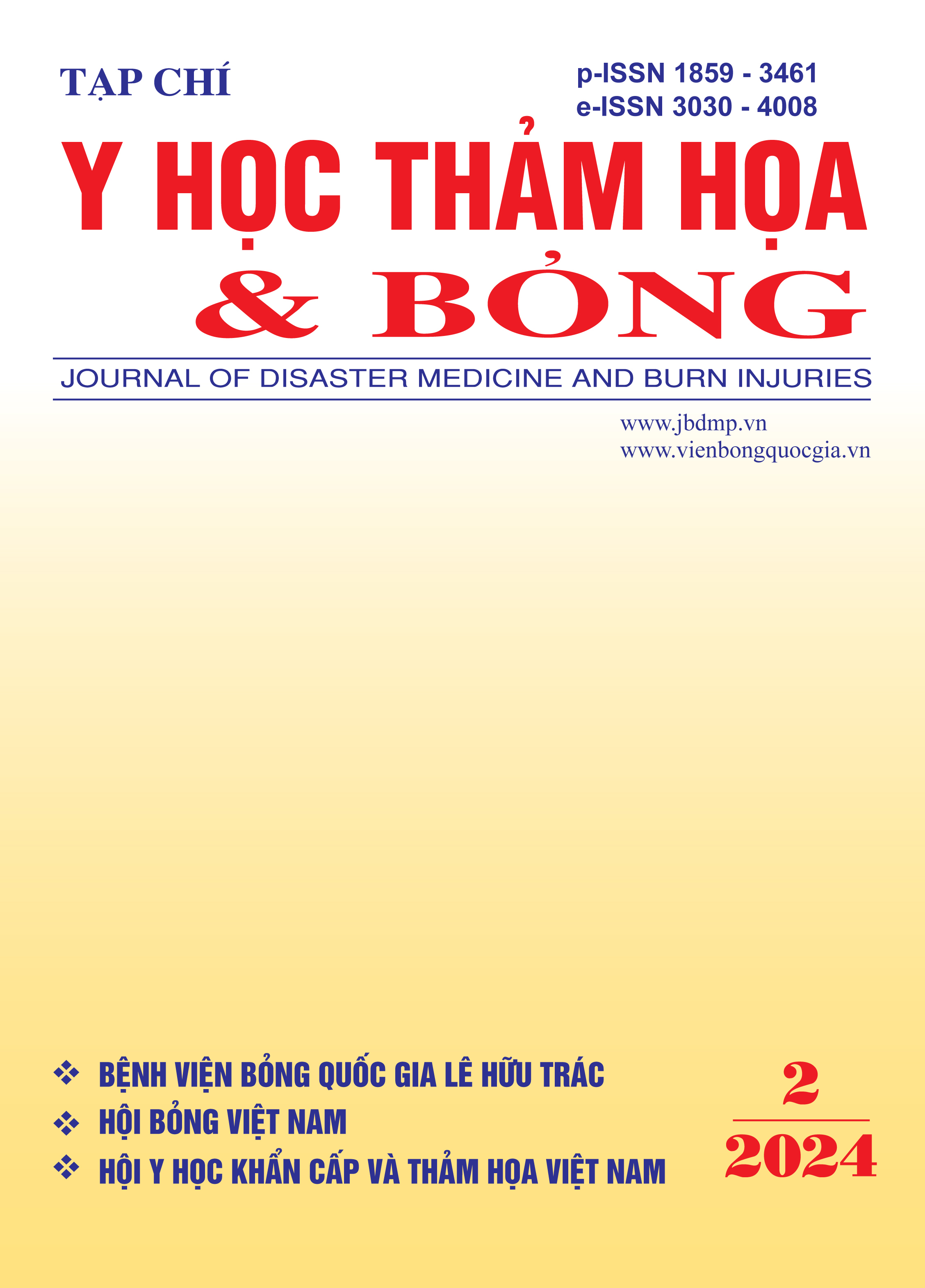Micromorphological and immunohistochemical characteristics in chronic wounds treated by autologous platelet rich plasma
Main Article Content
Abstract
Objective: To describe micromorphological and immunohistochemical characteristics in chronic wounds treated by autologous platelet-rich plasma.
Subject and method: Prospective, longitudinal, observational study of 30 patients with chronic wounds in Wound Healing Center - National Burn Hospital.
Results: At time T0, images of chronic wounds have lost all the epidermis, underneath, there are many inflammatory cells, poor neovascularization, and sparse fibroblast. At time T1, inflammatory cell infiltration is significantly reduced, forming new blood vessels, although the fibrous organization has no clear structure, it is also seen that the strong growth and proliferation. At time T2, the infiltration of inflammatory cells is only very small, neoplastic blood vessels proliferate, they tend to merge into larger blood vessels to increase perfusion, the fibroblasts form a richer fibrous organization with a clear structure, arranged in bundles or collagen.
Conclusion: RPR had the effect of decreasing the inflammatory process and promoting the proliferative of fibroblast and neovascularization, leading to the reorganizing ECM structure.
Article Details
Keywords
Chronic wound, platelet-rich plasma (PRP)
References
2. Marx R. E. (2001), "Platelet-rich plasma (PRP): what is PRP and what is not PRP?", Implant Dent, 10(4), p225-228.
3. Mehta S. and Watson J. T. (2008), "Platelet rich concentrate: basic science and current clinical applications", J Orthop Trauma, 22(6), p432-438.
4. Yuan T., Zhang C. Q., Tang M. J. et al (2009), " Autologous Platelet-rich Plasma Enhances Healing of Chronic Wounds", Wounds, 21(10), p280-285.
5. Díaz-Herrera MÁ and Martínez-Riera J. R. (2021), "Multicentre Study of Chronic Wounds Point Prevalence in Primary Health Care in the Southern Metropolitan Area of Barcelona", J Clin Med, 10(4),
6. Goh O. Q., Ganesan G., Graves N. et al (2020), "Incidence of chronic wounds in Singapore, a multiethnic Asian country, between 2000 and 2017: a retrospective cohort study using a nationwide claims database", BMJ Open, 10(9), pe039411.
7. Broughton G., 2nd, Janis J. E. and Attinger C. E. (2006), "Wound Healing: an overview", Plast Reconstr Surg, 117(7 Suppl), p1e-S-32e-S.
8. Heather L., David Keast, Louise Forest et al (2011), "Basic Principles of Wound Healing", Wound Care Canada Magazine, 9(2), p4-12.
9. Gabbiani G., Ryan G. B. and Majne G. (1971), "Presence of modified fibroblasts in granulation tissue and their possible role in wound contraction", Experientia, 27(5), p549-550.
10. Stuart Enoch and Patricia Price (2004), "Cellular, molecular and biochemical differences in the pathophysiology of healing between acute wounds, chronic wounds and wounds in the aged", World Wide Wounds, pAug 2004.
11. Grice E. A. and Segre J. A. (2012), "Interaction of the microbiome with the innate immune response in chronic wounds", Adv Exp Med Biol, 946, p55-68.
12. Nguyễn Thị Bích Phượng (2016), Đánh giá hiệu quả của liệu pháp huyết tương giàu tiểu cầu tự thân điều trị tại chỗ vết loét mạn tính, Luận văn thạc sĩ, Học viện Quân y.
13. Vũ Văn Dưỡng (2017), Nghiên cứu đặc điểm mô bệnh học vết loét lâu liền được điều trị bằng huyết tương giàu tiểu cầu phối hợp với ghép tế bào gốc trung mô từ mô mỡ tự thân, Luận văn thạc sĩ, Học viện Quân y.
14. Anitua E., Aguirre J. J., Algorta J. et al (2008), "Effectiveness of autologous preparation rich in growth factors for the treatment of chronic cutaneous ulcers", J Biomed Mater Res B Appl Biomater, 84(2), p415-421.
15. Singh Roop, Dhayal Raj, Sehgal Paramjit et al (2015), "To Evaluate Antimicrobial Properties of Platelet Rich Plasma and Source of Colonization in Pressure Ulcers in Spinal Injury Patients", Ulcers, 2015, p1-7.


